What PTSD Feels Like: The Inner Experience
Living with PTSD can feel like being trapped in a time warp where past trauma continues to intrude on the present moment. Many people describe it as having their nervous system stuck on high alert, as if danger could strike at any moment, even in safe environments. The body remembers trauma even when the mind tries to forget.
The Emotional Landscape
PTSD often brings waves of intense emotions that seem to come from nowhere. One moment you might feel relatively calm, and the next, you’re flooded with terror, rage, or profound sadness. These emotions can feel overwhelming and disconnected from current reality, as if you’re experiencing feelings that belong to another time and place.
Many people with PTSD describe feeling emotionally numb or disconnected from others. This protective mechanism can make relationships difficult, as loved ones may feel shut out or unable to reach you. The shame and guilt that often accompany trauma can create additional barriers to connection.
Physical Sensations
The body holds trauma in profound ways. People with PTSD often experience:
- A constant feeling of tension or being “wound up”
- Heart racing or pounding without apparent cause
- Difficulty breathing or feeling like there’s a weight on the chest
- Chronic pain, especially in areas that were injured during trauma
- Digestive issues and stomach problems
- Exhaustion from the constant state of hypervigilance
The Mental Experience
Your thoughts may race or feel scattered. Concentration becomes difficult as your mind constantly scans for threats. Memory can feel unreliable – some moments are crystal clear while others are foggy or completely absent. Intrusive thoughts and images from the trauma can pop up unexpectedly, making it hard to focus on daily tasks.
How to Know If You Have PTSD
While only a qualified mental health professional can diagnose PTSD, understanding the signs can help you recognize when to seek help. PTSD symptoms generally fall into four categories:
Re-experiencing Symptoms
- Flashbacks that make you feel like the trauma is happening again
- Nightmares related to the traumatic event
- Intense physical or emotional reactions to reminders of the trauma
- Intrusive thoughts or images that you can’t control
Avoidance Symptoms
- Going out of your way to avoid places, people, or activities that remind you of the trauma
- Trying not to think or talk about what happened
- Feeling emotionally numb or detached
- Loss of interest in activities you once enjoyed
Negative Changes in Thoughts and Mood
- Persistent negative beliefs about yourself, others, or the world
- Distorted thoughts about the cause or consequences of the trauma
- Persistent negative emotional states (fear, anger, guilt, shame)
- Difficulty experiencing positive emotions
- Feeling detached from others
- Inability to remember important aspects of the trauma
Changes in Arousal and Reactivity
- Being easily startled or frightened
- Always being on guard for danger (hypervigilance)
- Self-destructive behavior
- Trouble sleeping or concentrating
- Irritability or aggressive behavior
What Feels Wrong: The Disruption of Normal Life
PTSD can make everyday life feel like navigating a minefield. Simple tasks that others take for granted – grocery shopping, attending social events, or even leaving the house – can become monumental challenges. The unpredictability of triggers means you never know when a smell, sound, or situation might transport you back to the trauma.
Relationships often suffer as PTSD creates walls between you and those you love. Partners may feel helpless or rejected, children may not understand why their parent seems distant or angry, and friendships may fade as social withdrawal increases. The isolation can become a self-perpetuating cycle.
Work or school performance may decline as concentration problems and emotional dysregulation interfere with productivity. Some people find themselves unable to maintain employment, adding financial stress to an already overwhelming situation.
Perhaps most painfully, PTSD can rob you of your sense of safety in the world. The fundamental assumption that the world is generally safe and predictable gets shattered, leaving you feeling vulnerable and unprotected.
How PTSD Is Treated: Pathways to Healing
Modern trauma therapy offers multiple evidence-based approaches that can help you reclaim your life from PTSD. Treatment typically involves a combination of approaches tailored to your specific needs and preferences.
Brainspotting: Accessing the Deep Brain
Brainspotting is a powerful therapy that uses specific eye positions to access and process trauma stored in the subcortical brain. During a session, your therapist guides you to find “brainspots” – eye positions that correlate with traumatic activation in your nervous system. This gentle yet profound approach allows your brain’s natural healing mechanisms to process and release trauma without requiring you to relive or extensively discuss traumatic events.
Many clients find Brainspotting less overwhelming than traditional talk therapy because it works with the body’s wisdom rather than requiring detailed verbal processing. The therapy can bring relief relatively quickly, often in fewer sessions than traditional approaches.
QEEG Brain Mapping and Neurofeedback
QEEG brain mapping provides a detailed picture of how trauma has affected your brain’s functioning. This non-invasive assessment creates a map showing areas of over or under-activity, helping clinicians understand your unique neurological patterns.
Based on this map, neurofeedback training can help your brain learn healthier patterns of functioning. Through real-time feedback, your brain learns to self-regulate more effectively, reducing symptoms like hypervigilance, emotional dysregulation, and sleep difficulties. Many people experience this as finally teaching their nervous system how to find calm again.
EMDR: Reprocessing Traumatic Memories
Eye Movement Desensitization and Reprocessing (EMDR) uses bilateral stimulation (typically eye movements) to help your brain reprocess traumatic memories. This approach helps reduce the emotional charge attached to traumatic memories, allowing them to be stored as normal memories rather than constantly triggering fight-or-flight responses.
Somatic Approaches
Since trauma lives in the body, somatic therapy approaches are essential for many people’s healing. These therapies help you reconnect with your body safely, release trapped trauma, and develop resources for self-regulation. Techniques might include breathwork, gentle movement, or learning to track sensations with curiosity rather than fear.
Parts-Based Therapy
Parts-based approaches recognize that trauma can create internal divisions – parts of you that hold the trauma, parts that protect you from feeling it, and parts that try to function normally despite everything. This therapy helps these different aspects of yourself work together harmoniously rather than in conflict.
Holistic Support
Holistic approaches address the whole person, recognizing that trauma affects not just the mind but the entire system. This might include nutritional support to help your nervous system heal, mindfulness practices to develop present-moment awareness, or exploring how trauma has impacted your spiritual life.
Integration Therapies
Lifespan Integration therapy helps your nervous system update itself to present time, recognizing that the trauma is over and you survived. This gentle approach uses visualization and a timeline of memories to help integrate fragmented aspects of your experience.
The Journey of Healing
Healing from PTSD is not a linear process. There will be ups and downs, breakthroughs and setbacks. What’s important is finding the right support and approaches that resonate with you. Many people find that combining different therapeutic modalities creates the most comprehensive healing.
Recovery doesn’t mean forgetting what happened or pretending it didn’t affect you. Instead, it means the trauma no longer controls your life. The memories may remain, but they lose their power to overwhelm you. You develop the capacity to be present in your life, to feel joy again, and to connect authentically with others.
With the right support, PTSD doesn’t have to be a life sentence. The innovative therapies available today offer real hope for reclaiming your life and discovering post-traumatic growth – the profound positive changes that can emerge from working through trauma.
Bibliography
- van der Kolk, B. (2014). The Body Keeps the Score: Brain, Mind, and Body in the Healing of Trauma. Penguin Books.
- Levine, P. A. (2010). In an Unspoken Voice: How the Body Releases Trauma and Restores Goodness. North Atlantic Books.
- Grand, D. (2013). Brainspotting: The Revolutionary New Therapy for Rapid and Effective Change. Sounds True.
- Shapiro, F. (2018). Eye Movement Desensitization and Reprocessing (EMDR) Therapy: Basic Principles, Protocols, and Procedures (3rd ed.). The Guilford Press.
- Ogden, P., Minton, K., & Pain, C. (2006). Trauma and the Body: A Sensorimotor Approach to Psychotherapy. W. W. Norton & Company.
- Herman, J. (2015). Trauma and Recovery: The Aftermath of Violence–From Domestic Abuse to Political Terror. Basic Books.
- Schwartz, R. C. (2021). No Bad Parts: Healing Trauma and Restoring Wholeness with the Internal Family Systems Model. Sounds True.
- Pace, P. (2012). Lifespan Integration: Connecting Ego States through Time. Lifespan Integration LLC.
- Porges, S. W. (2011). The Polyvagal Theory: Neurophysiological Foundations of Emotions, Attachment, Communication, and Self-regulation. W. W. Norton & Company.
- Corrigan, F. M., & Grand, D. (2013). Brainspotting: Recruiting the midbrain for accessing and healing sensorimotor memories of traumatic activation. Medical Hypotheses, 80(6), 759-766.
- Masson, J., Bernoussi, A., & Moukouta, C. S. (2017). Brainspotting therapy: About a Bataclan victim. Global Journal of Health Science, 9(7), 103-107.
- D’Antoni, F., et al. (2022). Psychotherapeutic Techniques for Distressing Memories: A Comparative Study between EMDR, Brainspotting, and Body Scan Meditation. International Journal of Environmental Research and Public Health, 19(3), 1142.
- Fisher, J. (2017). Healing the Fragmented Selves of Trauma Survivors: Overcoming Internal Self-Alienation. Routledge.
- Cozolino, L. (2017). The Neuroscience of Psychotherapy: Healing the Social Brain (3rd ed.). W. W. Norton & Company.
- Siegel, D. J. (2012). The Developing Mind: How Relationships and the Brain Interact to Shape Who We Are (2nd ed.). The Guilford Press.




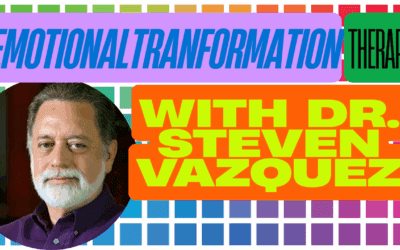



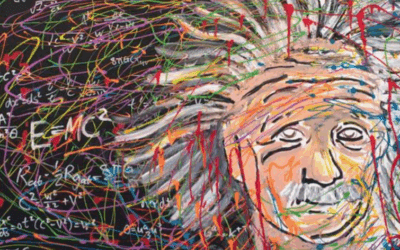



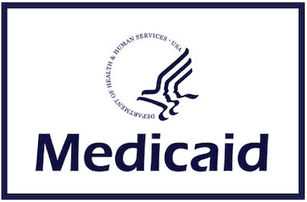


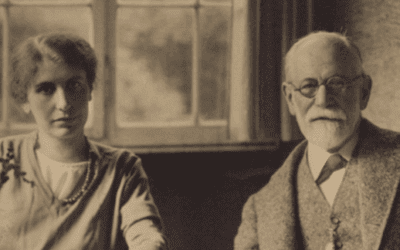







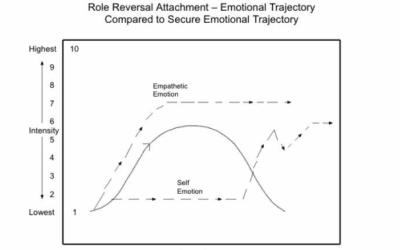


0 Comments